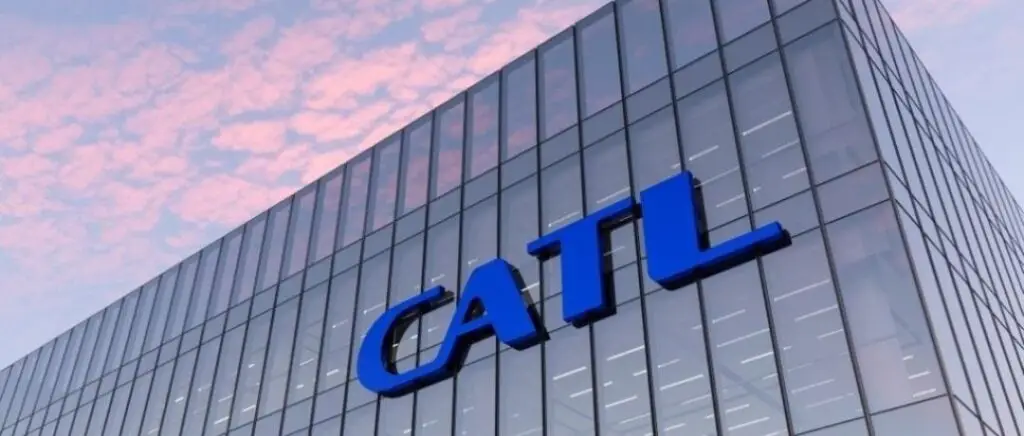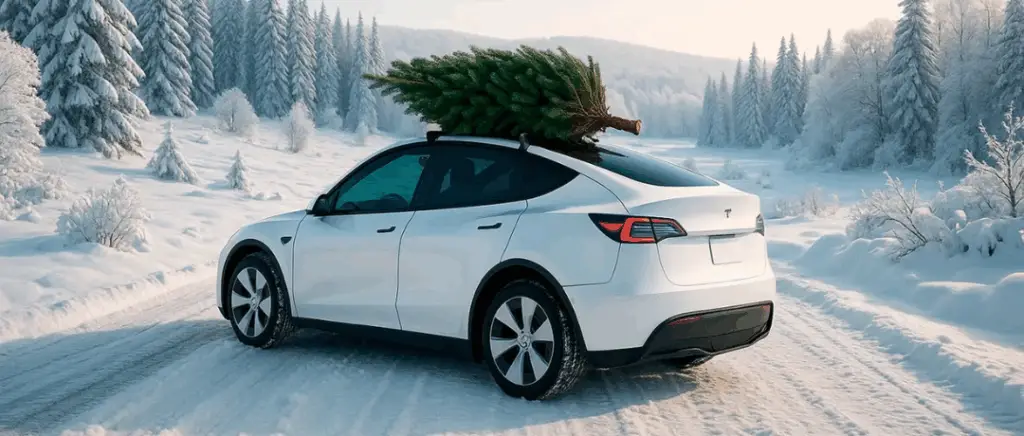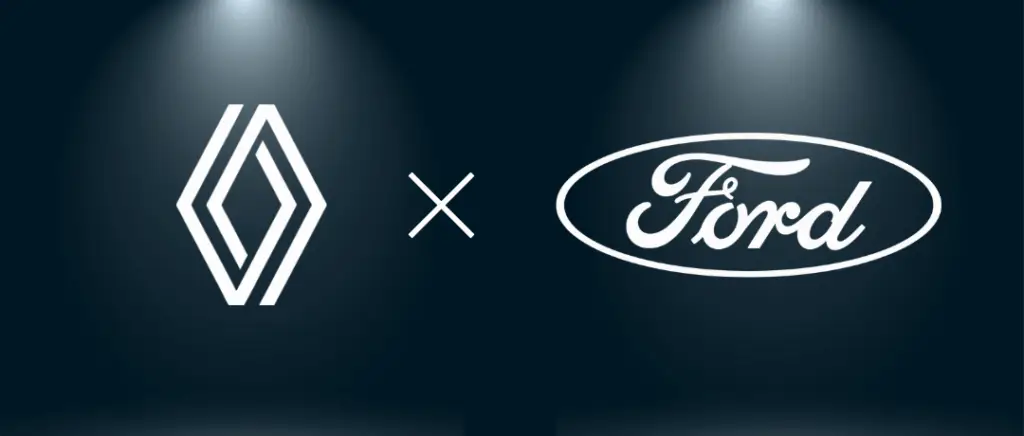What is the new battery launched by CATL?
CATL's new Qilin non-flammable battery marks a major step forward in electric vehicle safety. It is the first battery in the world to be certified as compliant with the future Chinese standard GB 38031-2025, which will come into force in July 2026 and impose unprecedented requirements in terms of fire and explosion safety.
Why is this battery considered a revolution in the sector?
The new non-flammable battery launched by CATL marks a major breakthrough in the electric vehicle industry, both in terms of its technical innovations and its ability to meet the most stringent safety standards to come. Here's why it's seen as a real revolution:
- Unrivalled safety For the first time, a mass-produced lithium-ion battery is certified "No Fire, No Explosion", meaning that it will not catch fire or explode, even in the event of thermal runaway or short-circuit. This advance eliminates one of the greatest risks associated with electric vehicles, reassuring both manufacturers and users.
- Early compliance with 2026 standards CATL is the first manufacturer to be certified to the new GB 38031-2025 standard, which will come into force in China in July 2026. These regulations require batteries to remain safe even in the event of overheating or violent shock, a standard that could soon be imposed worldwide.
- Advanced cell-to-pack (CTP) technology CATL's Qilin battery, at the heart of this innovation, is based on an architecture with no intermediate modules. The result: better use of volume (72 %), a record energy density of 255 Wh/kg and a structure capable of absorbing shocks and dissipating heat more efficiently.
- Independent validation and proven robustness The tests carried out by the China Automotive Technology & Research Center (CATARC) subjected the battery to extreme conditions (impacts, rapid charge cycles, short-circuiting) without a single incident. This long-term reliability has already been proven in millions of vehicles around the world.
- Impact on global competitiveness By staying ahead of the regulations, CATL is positioning itself as a key player for international manufacturers, at a time when safety is becoming a key purchasing criterion for consumers and a major regulatory issue in both Europe and the United States.
In short, this non-flammable battery from CATL does more than just improve safety: it redefines industry standards and paves the way for wider, more confident adoption of electric mobility.
How is CATL's battery already compliant with the 2026 standards?
CATL's new non-flammable battery, the Qilin, is ahead of the regulations by meeting all the requirements of the future Chinese standard GB 38031-2025, which will come into force in July 2026. Here's how it anticipates these unprecedented safety standards:
- Total resistance to fire and explosion
The GB 38031-2025 standard requires that batteries must not catch fire or explode, even in the event of thermal runaway or internal leakage. The Qilin passed all the required tests, including the most extreme, without ever catching fire or exploding, thus validating its compliance.
- Rigorous safety tests
The Qilin battery was subjected to bottom impact tests (collision simulation), 300 rapid recharge cycles and simulated short circuits. At each stage, it demonstrated remarkable thermal stability, with no fire or explosion.
- Official certification by an independent body
The Qilin's performance has been certified by the China Automotive Technology & Research Center (CATARC), the benchmark for automotive safety in China, which also supervises the C-NCAP crash tests. This official validation makes CATL the first manufacturer to obtain this certification before the standard comes into force.
- Advanced cell-to-pack technology
Thanks to its design with no intermediate modules, Qilin's CTP (cell-to-pack) technology optimises heat dissipation and mechanical robustness, while achieving an energy density of 255 Wh/kg. This innovative architecture contributes directly to compliance with new safety requirements.
- Increased occupant protection
In addition to fire resistance, the standard requires that the smoke potentially released does not endanger passengers. The Qilin meets this criterion thanks to advanced thermal and structural management, limiting any risk to the passenger compartment.
By anticipating future standards, CATL is not just meeting a regulatory obligation: the Group is asserting its technological leadership and setting the bar very high for the entire electric vehicle industry.
What is the GB 38031-2025 standard and why does it affect electric batteries?
Published in March 2025 and applicable from July 2026, the GB 38031-2025 standard redefines safety requirements at an unprecedented level, with immediate repercussions for all players in the sector.
- This standard requires that no battery should be able to catch fire or explode, even in the event of overheating or internal thermal leakage, whereas previous regulations merely required a simple warning signal before an incident.
- It introduces rigorous tests, such as impact from below and overcharge cycles followed by short circuits, to guarantee the robustness and thermal neutrality of the batteries, with no emission of flames, dangerous smoke or toxic gases.
- Management system response requirements (BMS) have been strengthened: shorter detection times, stricter temperature thresholds, tighter safety tolerances and exhaustive technical documentation are now mandatory.
- This tightening of regulations is designed to reassure consumers, prevent any risk of fire and position China as a world pioneer in battery safety, a trend that could inspire other international markets.
By aligning with GB 38031-2025, manufacturers are having to rethink their entire design and validation chain. This development is not just a regulatory constraint: it redefines safety standards and could accelerate the worldwide adoption of electric vehicles.
What are the "No Fire, No Explosion" regulations imposed by China?
China is preparing to overturn global safety standards for electric vehicle batteries with its "No Fire, No Explosion" regulations, officially known as GB38031-2025. Here are the key points of these ground-breaking regulations, which will come into force in July 2026:
- Main objective zero fire, zero explosion
The standard requires that batteries in electric vehicles must not catch fire or explode, even in the event of thermal runaway or a major fault. This requirement goes well beyond previous regulations, which merely imposed a warning time to allow passengers to be evacuated. - Extreme resistance tests
To obtain certification, the batteries will have to pass a series of rigorous tests:- Extreme heat resistance
- Mechanical shocks simulating accidents
- Short circuits, even after several hundred rapid charge cycles
- Bottom impact tests to check the protection of the bottom of the battery
- Elimination of the warning period
Unlike the old standard, which required an alarm to be sounded five minutes before a fire broke out, the new regulations require that no fire should break out, even under extreme stress. Nor must the smoke endanger the vehicle's occupants.
- Context and ambitions
This decision follows a number of high-profile accidents, including one involving a Xiaomi SU7, and is designed to reassure the public while consolidating China's position as world leader in electric vehicle safety.
It is also part of a global strategy to restore consumer confidence and anticipate the explosive growth of the electric vehicle market in China and internationally.
- International impact
Although the standard is currently limited to China, its influence could quickly spread to Europe and the United States, given China's weight in global battery production.
The "No Fire, No Explosion" regulation marks a historic turning point: it requires manufacturers to completely rethink the design and safety of batteries, with the aim of eliminating the risk of fire or explosion in electric vehicles, even in the event of extreme failure.
What technologies make the CATL battery non-flammable?
CATL has relied on a combination of advanced technologies and innovative architectural choices for its non-flammable batteries. Here are the main technological levers that have made this feat possible:
- Third-generation Cell-to-Pack (CTP) technology :
- CATL's Qilin battery adopts a cell-to-pack architecture with no intermediate modules, optimising energy density (up to 255 Wh/kg) and heat absorption, while improving the pack's mechanical strength.
- This structure provides better thermal management and more efficient heat dissipation, limiting the risk of thermal runaway propagation.
- Innovative materials and coatings :
- CATL uses a protective coating on the cathode, forming a film that insulates sensitive components and limits undesirable reactions in the event of shock or overheating.
- The anode benefits from advanced stabilisation, reducing degradation and the risk of internal short circuits.
- Self-repairing bionic electrolyte :
- An innovative electrolyte, capable of self-repair, reverses certain degradation processes and limits the formation of dendrites, which are often responsible for short circuits and fires.
- An innovative electrolyte, capable of self-repair, reverses certain degradation processes and limits the formation of dendrites, which are often responsible for short circuits and fires.
- Intelligent thermal and mechanical management system :
- A cell expansion management system limits internal mechanical stresses, reducing the risk of cracks or structural failure that could lead to fire.
- The robustness of the bottom of the battery has been reinforced to withstand shocks, particularly during violent impacts or collisions.
- Extreme tests and independent certificatione :
- The Qilin battery has passed impact, short-circuit and rapid charge cycle tests under the supervision of the China Automotive Technology & Research Center (CATARC), without ever catching fire or exploding.
- The Qilin battery has passed impact, short-circuit and rapid charge cycle tests under the supervision of the China Automotive Technology & Research Center (CATARC), without ever catching fire or exploding.
- Advanced thermal runaway management :
- Thanks to optimised materials and cellular design, the battery remains stable even in the event of internal failure, preventing the spread of heat and the emission of toxic fumes.
Which car models are already using CATL's non-flammable battery?
CATL's new non-flammable battery, in particular the Qilin, is already incorporated in several electric vehicle models, mainly on the Chinese market, but its deployment is accelerating internationally. This technology, which complies with the forthcoming GB 38031-2025 standard, has been won over by its enhanced safety and record energy density, which explains its rapid adoption by major manufacturers.
- Brands and models already equipped :
- Zeekr : The Zeekr 009 MPV is one of the first vehicles to benefit from the Qilin battery, which offers a autonomy Theoretical mileage may exceed 1,000 km according to the Chinese cycle.
- Xiaomi: The Chinese brand, which recently entered the electric vehicle market, equips some of its models with Qilin technology.
- Electric Lotus Qilin: The British carmaker, now under Chinese flag, has integrated the Qilin battery into its top-of-the-range electric models.
- Li Auto: Several models from Chinese manufacturer Li Auto already benefit from this non-flammable battery, particularly in the family SUV segment.
- Other CATL partner manufacturers :
- CATL also supplies its batteries to global giants such as Tesla, Ford, Volkswagen, Mercedes, General Motors, Stellantis and Toyota, pointing to the rapid adoption of the non-flammable battery on future European and American models as soon as the standard is introduced in 2026.
- Several Chinese brands such as Nio, Avatr, Geely and Chery are also among the first to benefit from this innovation.
- CATL also supplies its batteries to global giants such as Tesla, Ford, Volkswagen, Mercedes, General Motors, Stellantis and Toyota, pointing to the rapid adoption of the non-flammable battery on future European and American models as soon as the standard is introduced in 2026.
- Mass deployment in 2025-2026 :
- CATL has announced that 67 car models will receive the new generation of batteries by the end of 2025, covering a broad spectrum of electric and hybrid vehicles.
- CATL's strategy is aimed at rapid democratisation, targeting both premium and mass-market segments, with priority given to the Asian market before global expansion.
- CATL has announced that 67 car models will receive the new generation of batteries by the end of 2025, covering a broad spectrum of electric and hybrid vehicles.
In summary, CATL's non-flammable battery is already powering iconic models from innovative manufacturers, mainly in China, and its adoption will rapidly spread internationally as new safety standards come into force. This move positions CATL as a key leader in the market for safe batteries for electric vehicles.
Make your energy transition now, with a range of new 100 % electric vehicles available for leasing from Beev!
Why does CATL's non-flammable battery address consumer concerns?
Battery safety remains one of the main concerns of electric vehicle buyers, often fuelled by media coverage of the rare cases of spectacular fires. With its new non-flammable battery, CATL provides a concrete and reassuring response to these concerns, anticipating the most stringent standards that will come into force from 2026.
- Eliminating the risk of fire and explosion
CATL's Qilin battery is the first to be certified as compliant with Chinese standard GB 38031-2025, which requires that no battery can catch fire or explode, even in the event of thermal runaway or short-circuit. This advance eliminates the main anxiety factor for electric vehicle users, namely the fear of an uncontrollable fire. - Enhanced protection for occupants
The new regulations no longer require a simple pre-incident warning: they require that the battery remains intact and that any fumes generated do not endanger passengers. This ensures greater safety for all occupants of the vehicle, even in the event of an internal fault. - Extreme tests validated by independent bodies
The Qilin battery has undergone rigorous testing: mechanical shocks (particularly from below, simulating a collision), 300 rapid recharging cycles, short circuits, etc. None of these scenarios resulted in fire or explosion, reinforcing consumer confidence in the reliability of the product. - Advanced technology and preserved energy density
Thanks to cell-to-pack technology with no intermediate modules, the Qilin battery offers both unrivalled safety and high energy density (up to 255 Wh/kg), without compromising on range or performance. - Anticipating international standards
By being the first to obtain this certification, CATL is setting an example and reassuring customers worldwide, while these Chinese requirements should influence future European and international regulations.
Will this Chinese standard influence European and American standards?
The entry into force of Chinese standard GB 38031-2025, requiring batteries to be totally non-flammable from July 2026, marks a major turning point for the global electric vehicle industry. These regulations, which are much stricter than current standards in Europe and the United States, could rapidly become an international benchmark. Several factors suggest that it will have a profound influence on future Western standards:
- China, the world's largest market for electric vehicles, now requires that batteries cannot catch fire or explode, even in the event of thermal runaway or violent impact. This requirement goes well beyond European standards, which currently only require warning and containment systems.
- CATL, world leader in batteries, has already obtained certification for its Qilin model, demonstrating the industrial feasibility of these requirements. This technological advance sets the bar very high for international competitors.
- Most of the world's cell manufacturers are Chinese, which could accelerate the spread of these standards internationally, particularly through exports of vehicles and batteries.
- Chinese certification bodies, such as CATARC, play a similar role to Euro NCAP in Europe, facilitating future harmonisation of test and validation protocols.
- Faced with the media coverage of battery fires in the West, European and American regulators could be pushed to adopt similar standards to reassure consumers and reinforce safety.
In short, the Chinese standard GB 38031-2025 is not limited to a local framework: it is already establishing itself as a new reference standard. Western manufacturers will have to align themselves quickly if they are to remain competitive in the global electric vehicle market.
Summary: technology, standards and models using CATL's non-flammable battery
| Category | Details |
|---|---|
| Main technology |
- 3ᵉ generation Cell-to-Pack (CTP) (without intermediate modules) - Energy density: up to 255 Wh/kg - Optimised architecture for heat dissipation and mechanical strength |
| Key technical innovations |
- Self-repairing bionic electrolyte - Insulating coatings on the cathode - Advanced anode stabilisation - Intelligent thermal and mechanical management system |
| Safety standard met |
- GB 38031-2025 (China): comes into force in July 2026 - No Fire, No Explosion" requirement: zero fire, zero explosion, even in the event of thermal runaway or short-circuit. |
| Certification body | - CATARC (China Automotive Technology and Research Center) |
| Validation tests |
- Mechanical shocks (impact from below) - 300 fast recharge cycles - Short-circuit and overheating tests - No fire, no explosion reported |
| Objectives of standard GB 38031 |
- Eliminate any risk of fire/explosion - Eliminate the simple warning signal and demand intrinsic battery stability - Passenger protection against toxic fumes |
| Equipped vehicle models |
- Zeekr 009 (electric minivan >1000 km range) - Xiaomi EV - Lotus (premium electric models) - Li Auto (family SUVs) |
| Partner manufacturers |
- Deployed at: Tesla, Volkswagen, Ford, Mercedes, General Motors, Stellantis, Toyota - Chinese brands: Nio, Avatr, Geely, Chery |
| Planned deployment |
- 67 models to be equipped by the end of 2025 - Gradual roll-out in China, then internationally (Europe, USA) |
| Expected impact |
- Redefining global safety standards - Consumer insurance - Accelerating the adoption of electric vehicles |
Conclusion
CATL's Qilin non-flammable battery marks a decisive turning point in the evolution of electric vehicles, combining extreme safety, energy performance and early compliance with the most demanding standards. By complying today with the future Chinese standard GB 38031-2025, it offers unprecedented protection against fires and explosions, while maintaining high energy density and rapid recharging. Validated by independent tests, this technological advance positions CATL as a world pioneer in safety, already influencing future standards in Europe and the United States. At a time when consumer confidence and regulatory requirements are at the heart of the industry's challenges, the Qilin battery embodies the safe, high-performance future of electric mobility.
Do you want to go electric? Beev can help you make the transition to greener, more sustainable mobility. Whether you're an individual looking for a installation of home charging points or a professional requiring installation of recharging points for professionalswe are simplifying theinstallation of a recharging pointby offering you tailor-made solutions to meet your specific needs. So go ahead, install a charging point and set yourself apart from the competition.
You would like toto electric?
Beev offers multi-brand 100% electric vehicles at the best prices, as well as recharging solutions.
































